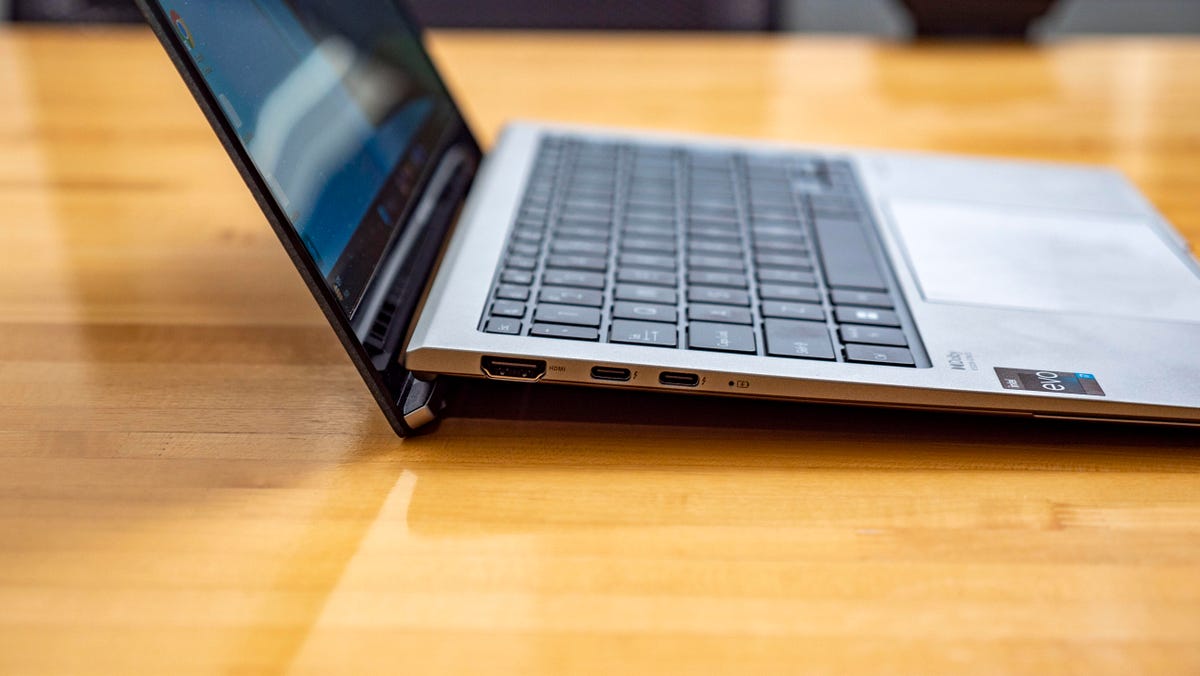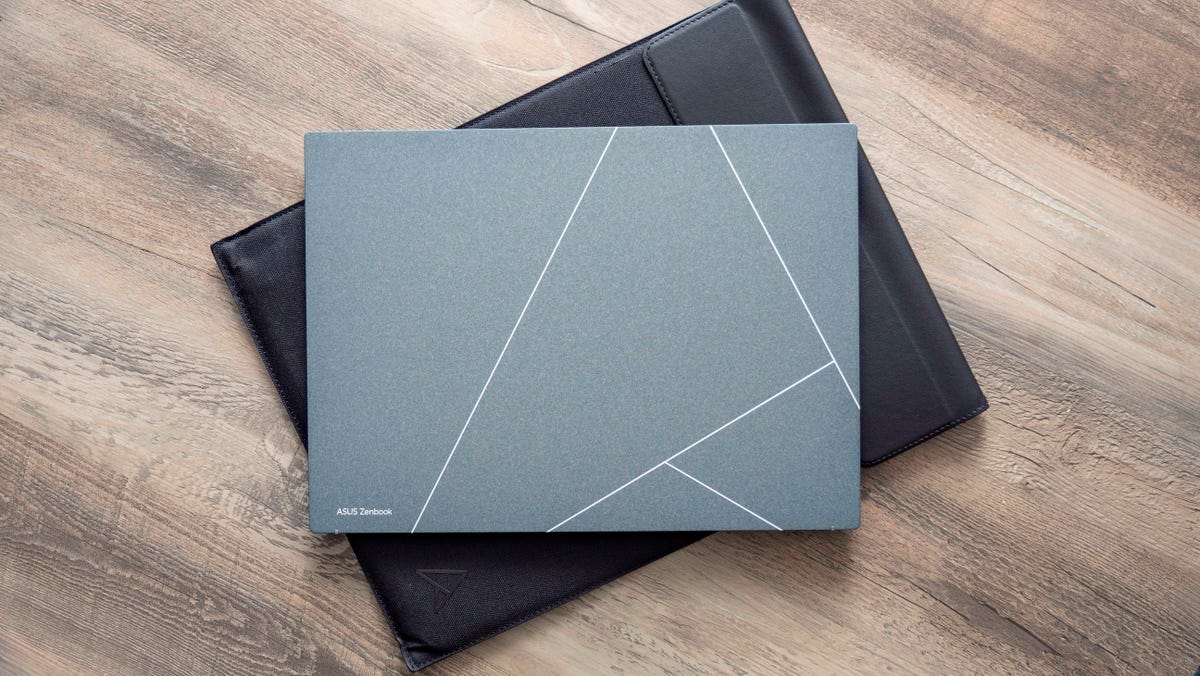
8.4
Asus Zenbook S 13 OLED (UX5304)
Like
- Extraordinarily thin and light
- Competitive performance
- Excellent OLED display
Don’t like
- Bottom can get warm
- No touchscreen
The 2.8K-resolution OLED display is exquisite for productivity and entertainment. And although OLED screens typically put a hurt on battery life, that’s not the case here. While the Zenbook S 13 OLED’s performance was on target for its components, the design, extra features and its nice-looking OLED display are the big attractions.
The Zenbook S 13 OLED comes in one configuration for $1,400. (It’s not readily available in the UK or Australia, but the US price converts to £1,150 and AU$2,200, respectively.) With 32GB of memory and a 1TB solid-state drive, not to mention an OLED display, you’re getting what you pay for. A similarly configured M2 MacBook Air 13, for instance, is $1,900. A Dell XPS 13 Plus is about $1,600, while a 14-inch Samsung Galaxy Book 3 with half the memory and storage of the Asus is $1,450 (though both use a faster Intel Core i7 P-series processor). The $1,550 HP Dragonfly Pro is another option, though its display doesn’t compare to the Asus. Lenovo’s Yoga 9i comes closest at $1,400 (and it beat the Asus by a bit on performance, but not battery life, in our tests) but again has half the RAM and storage. All of these are heavier than this Asus too. Basically, there’s nothing quite like the Zenbook S 13 OLED at its price.

The lid hinge angles the rear of the laptop up to help with heat and make typing a bit more comfortable.
Keeping a laptop this thin from heating up isn’t easy, though, and that’s the biggest issue: If you’re doing anything intensive, including streaming video or a long video chat, the bottom can get uncomfortably hot.
The heat is concentrated in the center at the back, so it can be mostly avoided when it’s on your lap. But for those who like to rest a laptop on bare legs while binging Netflix, this probably isn’t the laptop for you. I used it daily on a train commute, and the heat, while noticeable, never bothered me. When you need the laptop’s full power, use it on a desk.

Asus includes a laptop sleeve, but the laptop is sturdy on its own.
The laptop feels great in your hands, partly because of the ceramic-like treatment on its aluminum lid. The lid is stiff also, so flex isn’t a concern, and the same can be said about the keyboard deck. The laptop is tested to meet US MIL-STD-810H military standards for durability, Asus says.
Although there’s not much key travel (the body is quite thin, after all), it’s an overall comfortable typing experience. There are shortcut keys for screen captures, muting the mic and blocking the camera, as well as one for the MyAsus control center for adjusting everything from fan speed to sound modes to the display’s color performance. The laptop’s 1080p webcam and mics delivered a good video chat experience. There’s intelligent noise cancellation for the mics and a handful of tools to improve video, such as motion tracking and lighting correction to help even out shadows.
The review process for laptops, desktops, tablets and other computer-like devices consists of two parts: performance testing under controlled conditions in the CNET Labs and extensive hands-on use by our expert reviewers. This includes evaluating a device’s aesthetics, ergonomics and features. A final review verdict is a combination of both objective and subjective judgments.
The list of benchmarking software we use changes over time as the devices we test evolve. The most important core tests we’re currently running on every compatible computer include: Primate Labs Geekbench 5, Cinebench R23, PCMark 10 and 3DMark Fire Strike Ultra.
A more detailed description of each benchmark and how we use it can be found in our How We Test Computers page.

